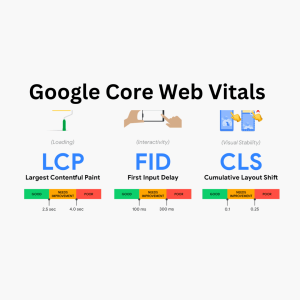Is your business getting lost in the ever-changing digital landscape? Consumer preferences shift faster than a hummingbird’s wings. But fear not, there’s a secret weapon waiting to be unleashed: Google Trends.
This free and powerful tool unlocks a treasure trove of insights into market trends, consumer behavior, and emerging topics. Mastering Google Trends is like having a crystal ball for your market, allowing you to make data-driven decisions that crush the competition.
This comprehensive guide will equip you with the knowledge to transform Google Trends from a dusty relic to a strategic weapon. We’ll delve into its core functionalities and explore advanced techniques for market analysis. By the end, you’ll be a Google Trends ninja, ready to dominate your market with laser-focused strategies.
So, ditch the guesswork and embrace the power of data. Let’s dive in and unlock the secrets to market domination with Google Trends!
Google Trends Metrics Decoded: Make Data Work for You
Google Trends is a goldmine of valuable data, but deciphering its metrics can feel like navigating a foreign language. Fear not, marketing warriors! This section will break down the key metrics of Google Trends, transforming them from cryptic symbols into a treasure map for market success. We’ll explore search interest over time, regional interest and demographics, and related topics and queries, empowering you to unlock the true potential of Google Trends for data-driven market analysis.
Unveiling Trends with Search Interest Over Time
At the heart of Google Trends lies the concept of search interest over time. This metric grants you the power to visualize the popularity of a search term over a designated period. It paints a vivid picture, revealing trends, seasonal patterns, and sudden spikes in interest. Imagine a graph where the X-axis represents time and the Y-axis signifies search volume. Peaks and valleys on this graph represent periods of heightened interest and relative decline, respectively. By analyzing these fluctuations, you can strategically time product launches, capitalize on trending topics when they’re most relevant, and maximize your reach during peak search periods.
Furthermore, find out the benefit of “Enhancing Website Measurement with Advanced Analytics Tools.”
Regional Nuances and Demographic Deep Dives
Google Trends transcends simple search volume by offering the ability to analyze regional interest and demographics. Imagine the power of uncovering regional variations in search behavior. By drilling down into specific geographic locations, you can discover untapped markets with a hunger for your product or service. This allows you to tailor your marketing strategies to resonate with local audiences and cultural nuances. Google Trends doesn’t stop there. It delves deeper, providing insights into the demographic characteristics of searchers, such as age, gender, and interests. This goldmine of information empowers you to refine your targeting and craft messaging that strikes a chord with your ideal customer profile, leading to significant improvements in engagement and conversion rates.
Unveiling Hidden Gems: Related Topics and Queries
Google Trends goes beyond isolated search terms, offering a holistic view of the search landscape through related topics and queries. This functionality acts like a map, revealing hidden connections and potential opportunities. By exploring related topics and queries, you can uncover:
- Hidden Gems: Topics that your target audience might be interested in, but haven’t explicitly searched for.
- Emerging Trends: Topics that are gaining traction and could represent future growth opportunities.
- Niche Markets: Specific segments within your broader market that perfectly align with your product or service.
Leveraging this treasure trove of information, you can develop content strategies that address the needs and interests of your target audience at a granular level, driving engagement and propelling conversion rates upwards.
Advanced Techniques for Market Analysis: Going Beyond the Basics
Having explored the core functionalities of Google Trends, let’s delve into advanced techniques that unlock even deeper market insights.
Comparative Analysis: Benchmarking Your Performance
One of the most powerful applications of Google Trends lies in its ability to conduct comparative analysis. Imagine being able to put your brand or product against your competitors.
By comparing multiple search terms or topics head-to-head, you gain a deeper understanding of their relative popularity, identify emerging trends within your niche, and benchmark your performance against the competition. This allows you to refine your strategies, optimize your campaigns, and stay a step ahead in the ever-evolving digital marketplace.
Long-Term Trend Analysis: Predicting the Future
While short-term trends provide valuable insights, Google Trends empowers you to analyze long-term trends and patterns spanning months or even years. Imagine having access to historical data, revealing seasonal trends, long-term shifts in consumer behavior, and the ability to forecast future trends with greater accuracy. By examining historical data, you can:
- Identify Seasonal Trends: Anticipate peak periods and potential dips in demand throughout the year, allowing you to optimize inventory management and marketing campaigns accordingly.
- Detect Long-Term Shifts: Uncover subtle but significant changes in consumer behavior over time, enabling you to adapt your product offerings and marketing strategies to remain relevant.
- Forecast Future Trends: Gain a glimpse into the future by identifying nascent trends and predicting their potential impact on your market.
Armed with this foresight, you can proactively adapt your strategies, capitalize on emerging opportunities before your competitors, and mitigate potential risks before they impact your bottom line.
Additionally, we suggest reading out “What is a Long Context Window?”
Predictive Modeling: A Glimpse into the Crystal Ball
Google Trends transcends data visualization and analysis, transforming into a powerful tool for predictive modeling. Imagine being able to forecast future trends and anticipate changes in consumer behavior with a higher degree of accuracy. By analyzing historical search data and identifying patterns, you can develop predictive models that forecast future trends. This allows you to:
- Stay Ahead of the Curve: Remain at the forefront of your industry by anticipating future trends and strategically positioning your brand to capitalize on them.
- Pivot Strategies in Real-Time: The ability to predict shifts in consumer behavior allows you to adapt your marketing strategies and product offerings in real-time, ensuring you remain relevant and competitive.
- Maintain a Competitive Edge: Predictive modeling empowers you to make informed decisions based on data, not guesswork, giving you a significant edge over competitors who lack such foresight.
Beyond the Numbers: The Human Touch in Market Analysis
While Google Trends provides invaluable data and insights, it’s crucial to remember that the human element remains paramount in market analysis.
- Qualitative Research: Don’t solely rely on quantitative data. Complement your Google Trends analysis with qualitative research methods like surveys, focus groups, and customer interviews to gain a deeper understanding of the motivations and pain points of your target audience.
- Industry Knowledge: Combine Google Trends insights with your industry expertise. Your understanding of the competitive landscape, market forces, and regulatory environment will provide context and nuance to the data.
- Creative Thinking: Don’t be afraid to think outside the box. Use Google Trends data as a springboard for creative thinking. Uncover unexpected trends, explore new market opportunities, and develop innovative strategies that differentiate you from the competition.
By combining the power of Google Trends with the human touch, you gain a holistic understanding of your market, enabling you to make informed decisions that drive long-term success.
Google Trends for Data-Driven Market Analysis
Google Trends is an invaluable tool for anyone seeking to gain a competitive advantage in today’s dynamic marketplace. By mastering its functionalities and employing advanced techniques like comparative analysis, long-term trend analysis, and predictive modeling, you gain a deeper understanding of market trends, consumer behavior, and emerging topics. Remember, data is just one piece of the puzzle.
By combining Google Trends with qualitative research, industry knowledge, and creative thinking, you can develop data-driven strategies that propel your business forward, leaving the competition in the dust.
Putting it All Together: A Practical Approach to Google Trends Mastery
Now that you possess a comprehensive understanding of Google Trends functionalities and advanced techniques, let’s explore how to translate this knowledge into actionable insights. Here’s a practical framework to guide your journey:
1. Define Your Objectives:
- What specific market insights are you seeking? (e.g., identifying seasonal trends, uncovering competitor strategies, discovering new market opportunities)
- Align your objectives with your overall marketing goals. (e.g., increasing brand awareness, driving website traffic, boosting sales)
2. Craft Your Search Terms:
- Start with broad seed keywords relevant to your industry or product category.
- Refine your search terms based on your specific objectives. (e.g., include location-specific keywords, competitor brand names, or related product categories)
- Utilize Google Trends’ suggested search terms to expand your query and discover relevant variations.
3. Leverage Advanced Features:
- Comparative Analysis: Benchmark your performance against competitors and identify emerging trends within your niche.
- Time Frame Selection: Analyze short-term trends to capitalize on seasonal peaks or long-term trends to forecast future market shifts.
- Geographic Filters: Tailor your insights to specific regions or uncover untapped markets with high search interest.
- Demographic Filters: Refine your audience targeting by age, gender, and interests for laser-focused marketing campaigns.
4. Analyze and Interpret Data:
- Identify patterns, trends, and spikes in search volume.
- Correlate search trends with external factors like news events, industry reports, or social media buzz.
- Look for discrepancies between regional or demographic data segments.
5. Translate Insights into Action:
- Develop content strategies that address trending topics and audience interests.
- Optimize your product offerings and marketing campaigns based on seasonal fluctuations and long-term shifts.
- Refine your audience targeting based on demographic insights revealed by Google Trends.
- Proactively adapt your strategies based on predicted future trends.
6. Continuously Monitor and Refine:
- Regularly revisit your search queries and adjust them based on new market developments.
- Monitor the performance of your strategies based on key metrics like website traffic, conversion rates, and brand awareness.
- Refine your approach based on ongoing data analysis and feedback from your marketing campaigns.
Thus, by following this practical framework and leveraging the power of Google Trends, you can transform market research into a dynamic and continuous process. Further this empowers you to make data-driven decisions, stay ahead of the curve, and achieve a significant competitive edge in today’s ever-evolving digital landscape.
Bonus Tip: Integrate with Other Marketing Tools
For a holistic understanding of your market, consider integrating Google Trends data with other marketing tools. Furthermore, combine search trends with website analytics to understand how search behavior translates into user actions.
Moreover, utilize social listening platforms alongside Google Trends to gain a deeper understanding of trending topics and conversations within your industry. By fostering a synergy between these tools, you can paint a comprehensive picture of your market landscape, empowering you to develop truly impactful marketing strategies.
Conclusion
In conclusion, Google Trends is a powerful and versatile tool that, when mastered, can unlock a treasure trove of market insights.
Thus, by following the strategies outlined above, you can leverage Google Trends to transform your market research, develop data-driven marketing campaigns, and propel your business towards sustained success. Moreover, remember, the key lies in continuous learning, experimentation, and adaptation. As the digital landscape evolves, so too should your approach to market analysis. With Google Trends as your strategic weapon, you can navigate the ever-changing tides of the market with confidence and clarity.
Next Steps
Don’t wait any longer! Simply, head over to Google Trends (https://trends.google.com/trends/trendingsearches/daily) and start exploring. Since, this guide has equipped you with the foundational knowledge to unlock the treasure trove of insights Google Trends offers. Moreover, as you delve deeper, experiment with different features, explore various search terms, and don’t be afraid to get creative. Therefore, remember, the key to success lies in continuous learning and applying your newfound knowledge to develop winning marketing strategies.





2 Responses